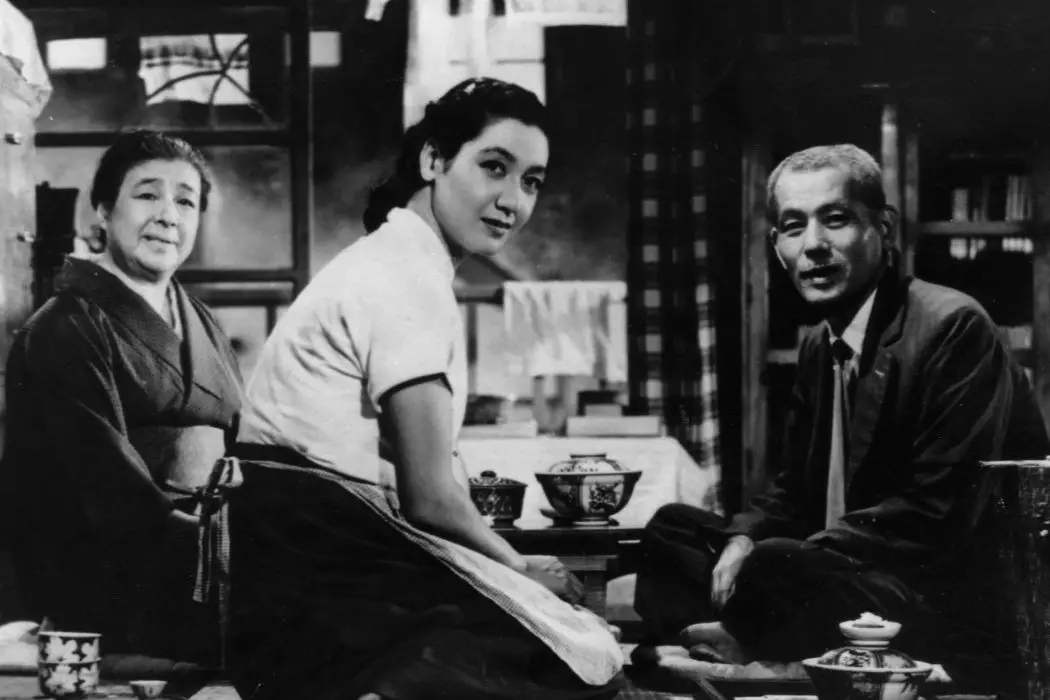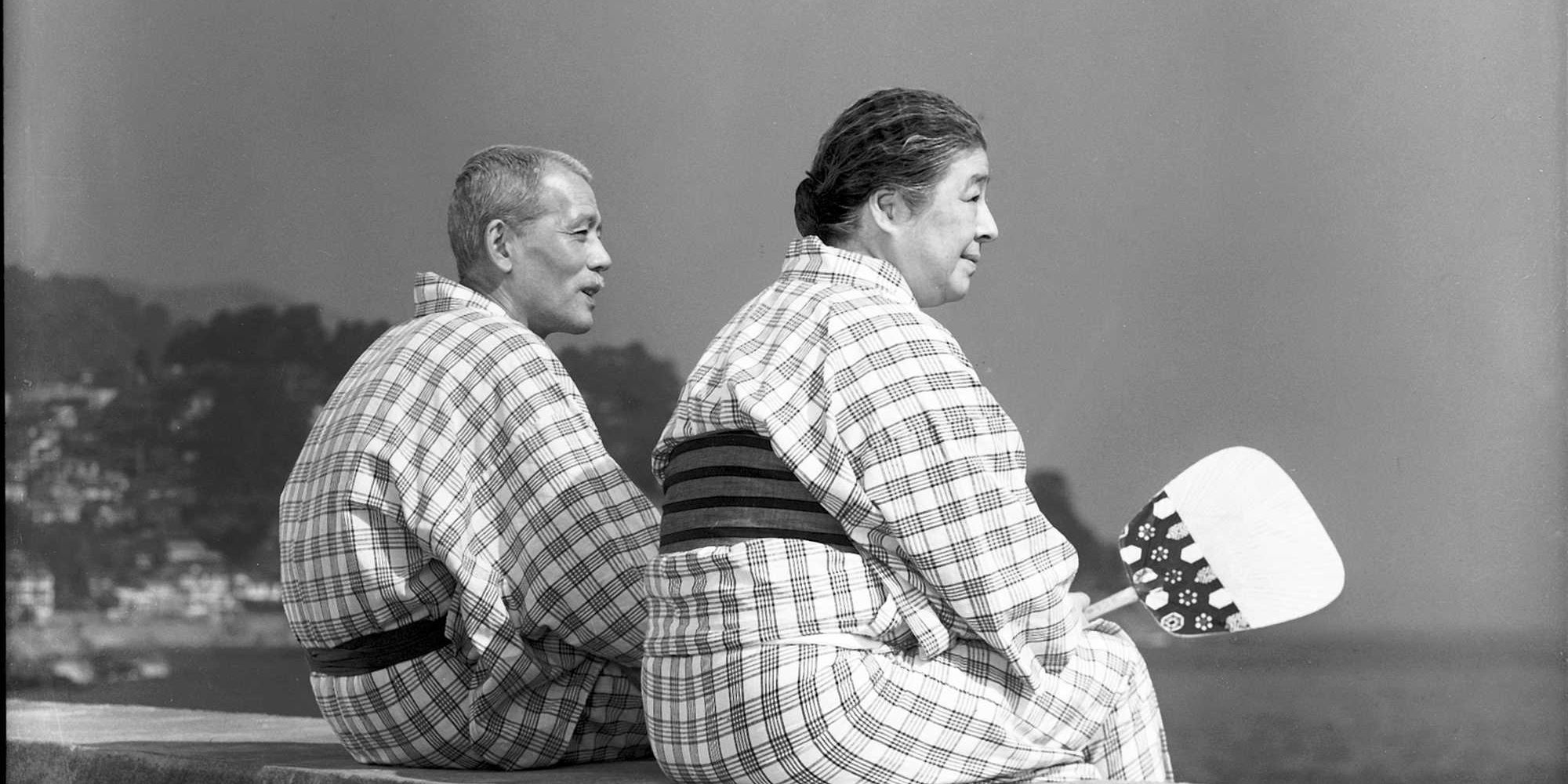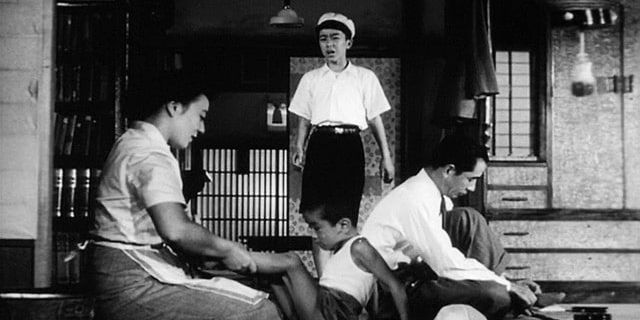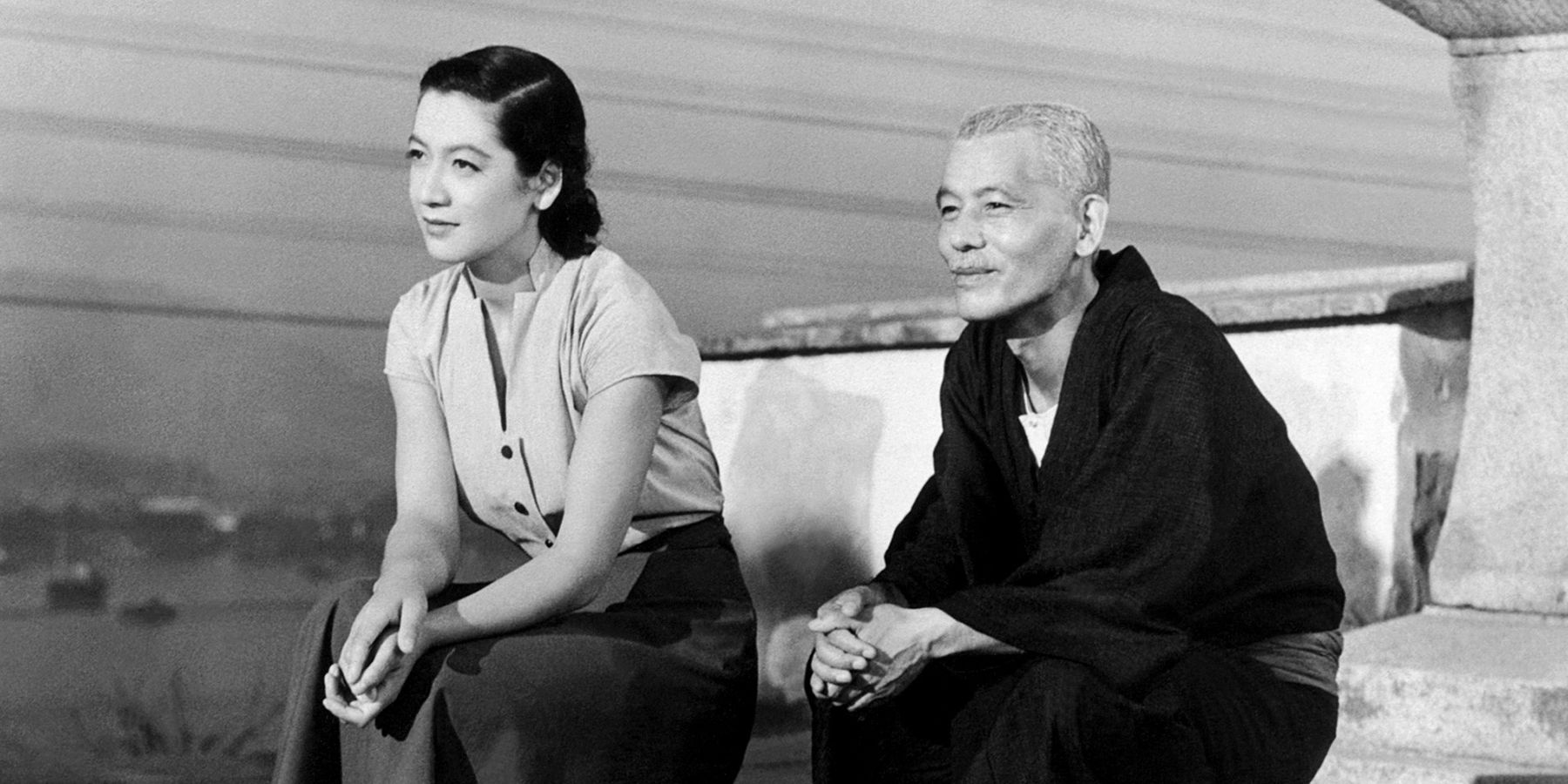The Neglected Politicism of Yasujiro Ozu’s TOKYO STORY

Andrew Emerson is a University of Chicago student. His high…
In the English-speaking world, Yasujiro Ozu’s Tokyo Story has normally been characterized as a family drama. Shortly after the film was first distributed in America in the ’70s, for instance, the critic Charles Michener described it as “a shattering, universal drama of family tensions.” Decades later, the general consensus remains that the film is primarily about “our families, our natures, our flaws and our clumsy search for love and meaning.” (To quote the late Roger Ebert.)
It’d be absurd to suggest that this view of Tokyo Story is wrong. The film’s central conflict, after all, revolves around how two Tokyo-based siblings – Koichi, a doctor; and Shige, a hairdresser – ignore and belittle their visiting parents, an elderly couple named Shukichi and Tomi. In an interview he gave about the film, moreover, Ozu himself noted that “through the growth of both parents and children, I described [in Tokyo Story] how the Japanese family system has begun to come apart.”

In emphasizing Tokyo Story’s family-related themes, however, critics have often neglected the film’s political dimension. Released just one year after the end of the American occupation of Japan, Tokyo Story obliquely reflects on the changes that the occupation brought about. In doing so, the film criticizes Japanese people, rebuking the way they buried memories of the past and enthusiastically adopted the occupation’s foreign values.
Japan During the Occupation
To appreciate Tokyo Story’s politicism, it helps to have some understanding of what went on during the American occupation. Specifically, one of the most striking aspects of the occupation was how rapidly ordinary Japanese people embraced American ideals. During World War II, most Japanese civilians eagerly backed their right-wing nationalist government. After the occupation began, however, many of those same civilians became ardent supporters of the Americans and their comparatively progressive governing agenda.
While this abrupt attitudinal shift was partially motivated by a genuine desire for Western-style democracy, it in many cases also stemmed from a mixture of hypocrisy and convenient amnesia. Out of a desire to both evade questions about war responsibility and attain material well-being, many Japanese people seemed to willingly overlook history. In particular, they overlooked the fact that, up until the very beginning of the occupation, America had been an enemy whom they’d vowed to fight to the death. As John Dower notes in Embracing Defeat: Japan in the Wake of World War II, many observers consequently came to see ordinary Japanese people as mere “weather vanes…[prone to] turning as the wind blew.”
Symbolically Significant Characters
While Tokyo Story never directly comments on these changes in Japanese society, it pointedly references them through the way it makes its characters represent “past” and “present” Japan. In many respects, on the one hand, Koichi and Shige represent the Westernizing, future-oriented spirit of the American occupation. Even though only eight years have passed since the end of World War II, for one, neither of the two makes any reference to “the war” in conversation, a fact that’s consistent with American efforts to censor public discussion of the war.
It’s also significant that Shige is a woman who runs a hair salon. In the 19th and earlier centuries, Japanese women were largely confined to the domestic sphere, a reality that was encapsulated by the so-called “good wife, wise mother” ideal. The fact that Shige runs a business – and, moreover, the fact that she doesn’t have kids – conceivably owes itself to the American occupation, which heavily promoted the concept of gender equality. In this way, the character of Shige readily typifies the social changes that the occupation gave rise to.

In contrast to their children, meanwhile, one could say that Shukichi and Tomi represent the past – specifically, the war and the traditional, comparatively non-Westernized Japan that the occupation stood in opposition to. As evidence for this idea, the couple’s second son went missing in combat, making them and their widowed daughter-in-law Noriko the main characters who were most immediately affected by the war. Their son’s presumed death, moreover, also helps explain why they and Noriko are the only main characters who directly reference the war in conversation.
In terms of character symbolism, perhaps the most telling scene in Tokyo Story is the one in which Shukichi meets up with old friends in a restaurant. While they reminisce about the past, the Gunkan koshinkyoku – a military march that was extremely popular during Japan’s imperial era – plays in the background. With such a choice of music, Ozu explicitly casts Shukichi as an embodiment of Japan’s pre-occupation history.
Ultimately, these characterizations carry significant political implications. As symbols of Westernization, on the one hand, Shukichi’s rather unlikable children offer a negative view of the occupation, suggesting that Japanese people embraced American ideals at the expense of cultural and familial traditions. Given that the film treats Shukichi as a symbol of Japan’s imperial past, moreover, Koichi and Shige’s neglect of him reflects the idea that, in embracing the West, occupation-era Japan forgot about its history.
Conveniently Superficial Bus Tours
Beyond the film’s use of symbolic characters, there’s one particular scene in Tokyo Story that stands out for its sharp sociopolitical commentary. Early in the film, Shukichi, Tomi, and Noriko go on a bus tour of Tokyo. As the bus drives past several large office buildings, an unseen tour guide announces that she will “trace the illustrious history of this great city,” and she singles out the Imperial Palace as a “tranquil setting” that was “built 500 years ago by Lord Dokan Ota.”
If you were just going by this sequence, post-occupation Tokyo comes off as a bustling city that’s also successfully preserved its traditional heritage. Notably, however, the sequence completely ignores how the West decimated the city and its history during World War II. Towards the war’s end, a series of Allied air raids turned Tokyo into what the writer Donald Richie called “a vast and blackened plain where a city had once stood.” In the process, they caused tens of thousands of deaths, considerable damage to the city’s heritage – and, ironically, extensive devastation to the same Imperial Palace that the tour guide presents as a marker of historical continuity.
If you didn’t know any better, this bus tour scene might seem narratively superfluous. But given this historical context and Ozu’s evident interest in politics, it’s hard not to see this scene as a form of social commentary. In a way, the tour guide’s glaring omissions mirror – and implicitly condemn – the way occupation-era Japan dealt with memories of war. Like the neglect of Shukichi, in other words, the guide’s omissions reflect the notion that occupation-era Japan hypocritically and conveniently overlooked its history with America.
Conclusion: Tokyo Story as Commentary

In their analyses of his films, many critics have characterized Ozu as a kind of “Zen filmmaker,” a director whose works eschew the hurly-burly of daily life in favor of contemplation and the “transcendent.” As Paul Schrader puts it in his Transcendental Style in Film, “the way of Zen came to predominate in certain [Japanese] arts – painting, gardening, the tea ceremony, poetry, archery, Noh drama, Judo, Kendo – and these arts are the precedents for Ozu’s films.”
If Tokyo Story is any guide, however, Ozu’s films are hardly the detached, single-mindedly aesthetic works that Schrader and others make them out to be. Rather, Ozu’s films actually display a keen interest in real-world affairs, to the point that they’re quite willing to critique changes in Japanese society. Even though Ozu’s films don’t exactly advertise themselves as political, they can and should be appreciated as works of sociopolitical commentary, and they ultimately offer useful insight into how Japanese people viewed the American occupation.
Have you seen Ozu’s Tokyo Story? If so, what did you think of it? Let me know in the comments!
Watch Tokyo Story
Bibliography
Unless otherwise noted, quotes and information for this article were acquired from the following sources:
Bordwell, David. Ozu and the Poetics of Cinema. Princeton, NJ: Princeton University Press, 1988.
Clements, Jonathan. An Armchair Traveller’s History of Tokyo. London: Haus Publishing, 2018.
Desser, David, ed. Ozu’s Tokyo Story. Cambridge Film Handbooks. Cambridge, England: Cambridge University Press, 1997.
Dower, John. Embracing Defeat: Japan in the Wake of World War II. New York: W.W. Norton, 1999.
Duus, Peter. Modern Japan. Boston: Houghton Mifflin, 1998.
Mansfield, Stephen. Tokyo: A Cultural and Literary History. Cities of the Imagination. Oxford, England: Signal Books, 2009.
Richie, Donald. Ozu: His Life and Films. Los Angeles: University of California Press, 1974.
Schrader, Paul. Transcendental Style in Film: Ozu, Bresson, Dreyer, With a New Introduction. Oakland, CA: University of California Press, 2018.
Tillman, Barrett. Whirlwind: The Air War Against Japan, 1942-1945. New York: Simon & Schuster, 2010.
Zatko, Martin. The Rough Guide to Tokyo. 7th ed. Rough Guides. APA Publications: London, 2017.
Does content like this matter to you?
Become a Member and support film journalism. Unlock access to all of Film Inquiry`s great articles. Join a community of like-minded readers who are passionate about cinema - get access to our private members Network, give back to independent filmmakers, and more.
Andrew Emerson is a University of Chicago student. His high school English teacher once asked him to read a batch of Roger Ebert’s reviews for class, and he’s been fixated on the idea of writing about movies ever since. You can follow his attempts to pursue this obsession at http://filmwatcher.net/.













